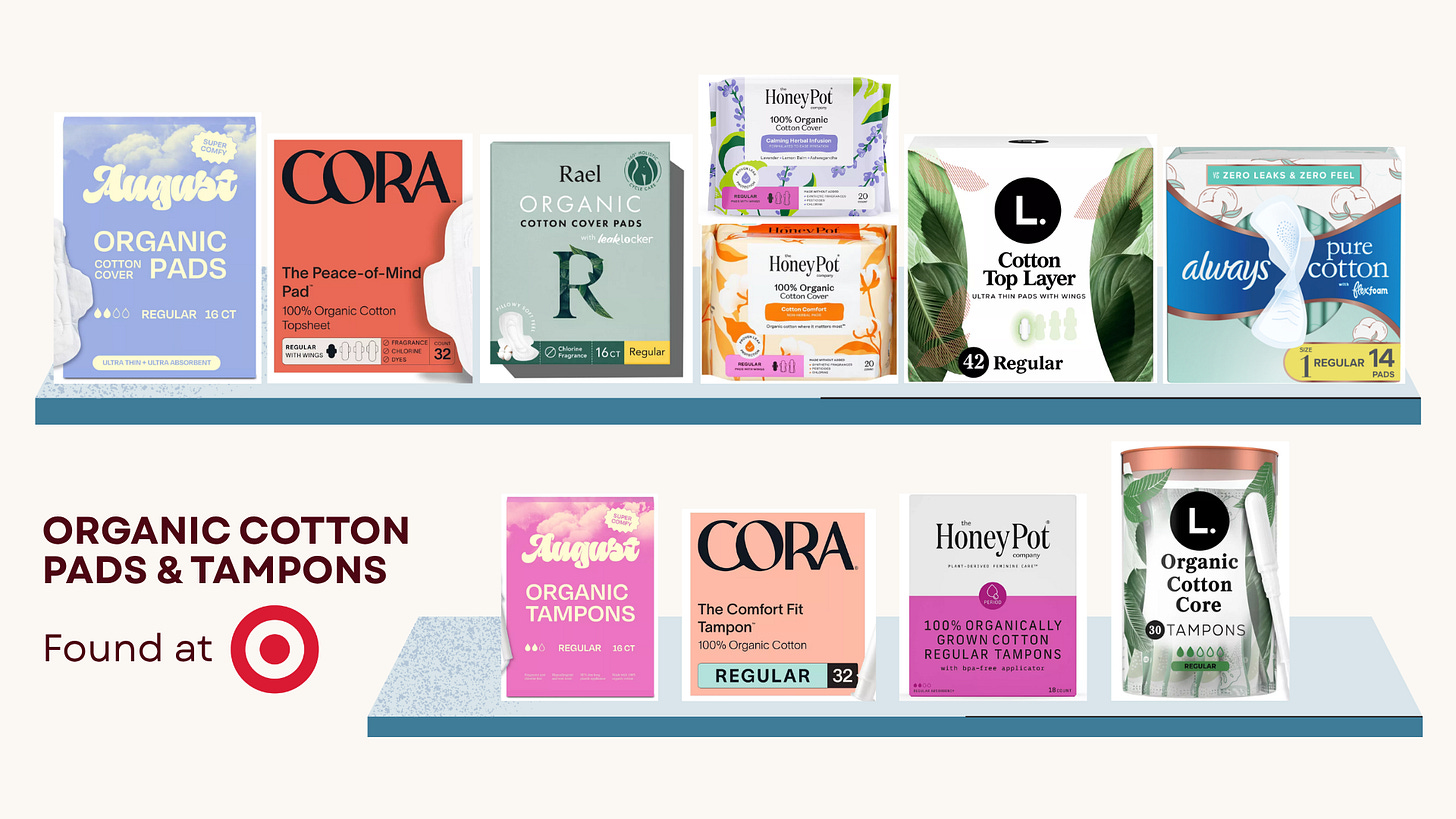JUMP-ABLE Table of Contents:
(click any of these links to jump to that section of this post)
A few months ago I started following the Okamoto sisters on TikTok. Nadya, the eldest, documents her life and her founder journey with the period care company she started: August.
Knowing that Nadya is a Gen-Z startup founder / Harvard alum, I thought it would be interesting to take a look at her brand and see if I’d have any strategic recommendations.
She recently shared that the brand updated its look and packaging, and I knew they’d gained some distribution in Target. I wanted to see if their packaging updates would help them stand out at a retailer like Target, or if there was anything else they could be doing to share their difference.
First: Analysis
I first wanted to get to know the August brand. I combed through its website, paying specific attention to its product pages and packaging, homepage, about page, and sustainability/impact page. I also peeked at its social profiles, and its product pages on target.com. Primarily I wanted to get a sense for how the brand shows up on digital and physical shelves, and in its homespace (DTC website). Paying close attention to language, I was looking for claims, benefits, value propositions, impact, and stories.
Then I wanted to understand how August stacks up alongside its peers on those shelves. Since Target is one of its biggest retailers right now, I focused on period care brands at Target that use 100% organic cotton to make pads and tampons.
Brands that play in this space include:
Cora (founder-owned)
Rael (founder-owned)
The Honeypot Company (founder-operated & recently acquired by CODI)
L. (P&G acquired in 2019)
Always Pure Cotton (P&G legacy brand)
I got to know each of these brands and their cotton pads & tampons the same way I got to know August–by combing through their websites, product pages, packaging, etc., and noticing how they show up on shelves. For these brands too, I was paying close attention to their language, looking for claims, benefits, value propositions, impact, and stories. Trends began emerging.
Next: Findings
In looking at each brand’s pads and tampons, I noticed a couple different types of claims that came up frequently: product ingredients, and product function benefits. This told me that when consumers are shopping for their pads or tampons, they’re looking first at what the product is (and is not) made of, and then considering how the product functions.
If the consumer is shopping for pads or tampons made with organic cotton, I can assume it’s because they’ve educated themselves on the health benefits of that ingredient. Maybe they’ve experienced adverse effects from period products that are not made with organic cotton. Either way, they’re looking for pads or tampons made with organic cotton because they believe products made with that ingredient are better for them.
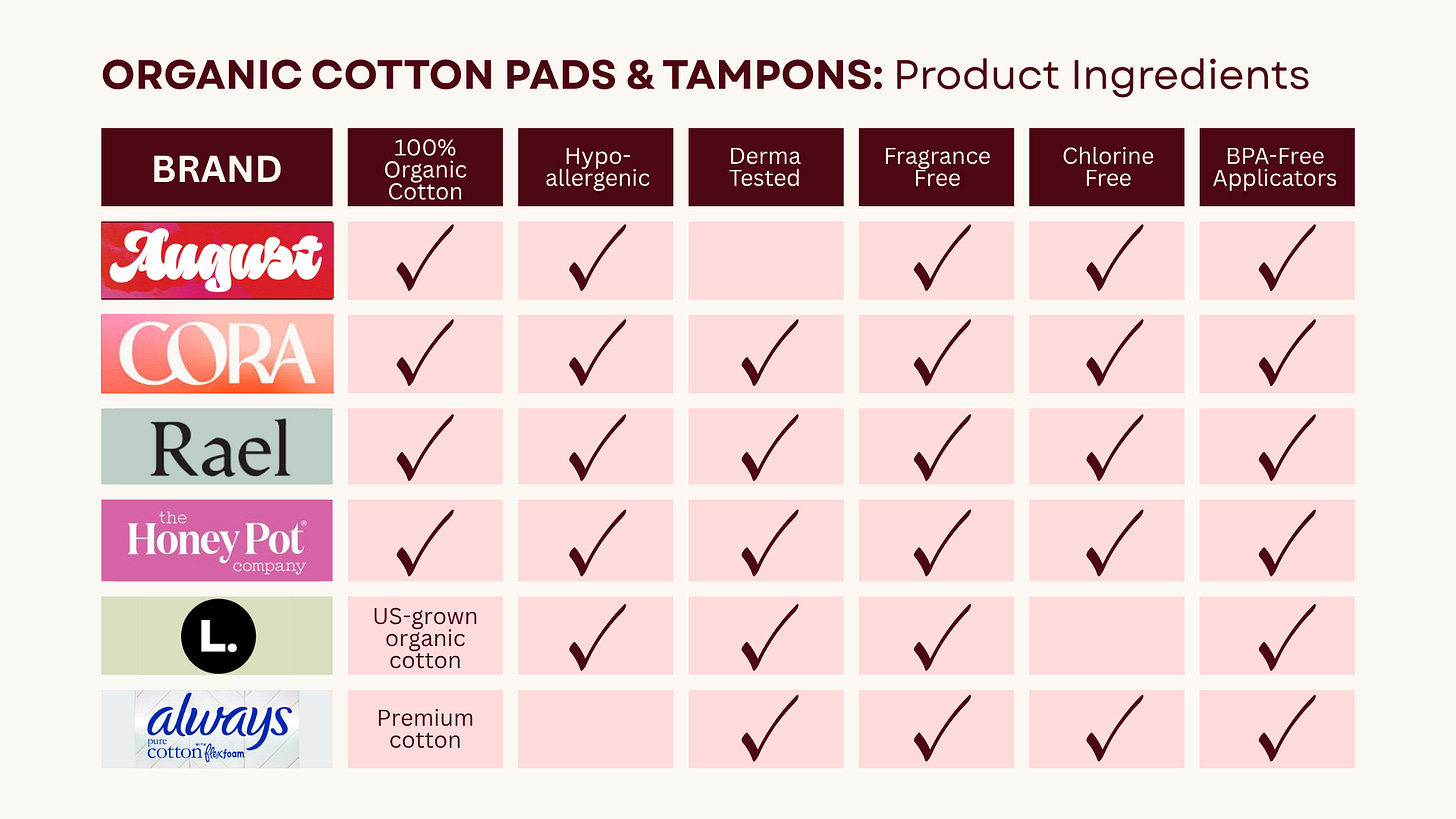
All six brands included “better for you” claims related to ingredients on their products. These claims talked about ingredients that are in the product—like organic cotton—the quality of the product (e.g. hypoallergenic, dermatologist-tested), and ingredients that are not in the product, e.g., free of fragrances, chlorine, and BPA.
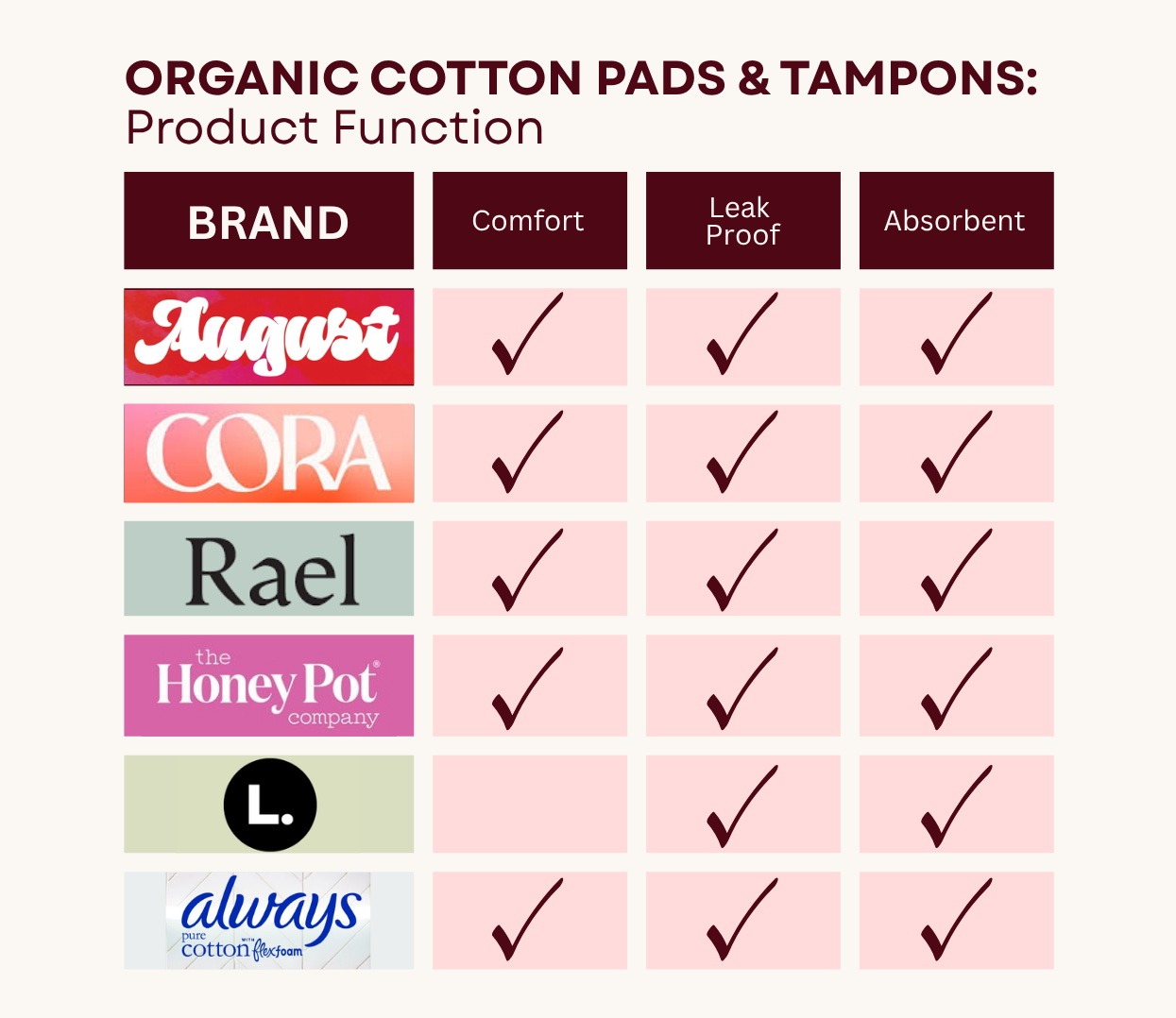
It also became clear that when consumers are shopping for pads or tampons, they’re looking for the product to function in a few specific ways. They’re looking for comfort, leak prevention, and absorption. All six brands included claims that their products would meet those needs.
So on a product level, all six brands are at parity with each other. No brand offered a product that functioned better or differently than the other, and all products had very similar ingredient makeups (except The Honeypot Company’s herbal-infused pads—those were the only products that offered remarkable and unique added benefits).
So What’s the Difference?
If all of these products are essentially similar in their function and makeup, then why would a consumer choose any one of these over another? The difference showed up in brand.
When your product is at parity with competitors, your brand is what makes the difference.
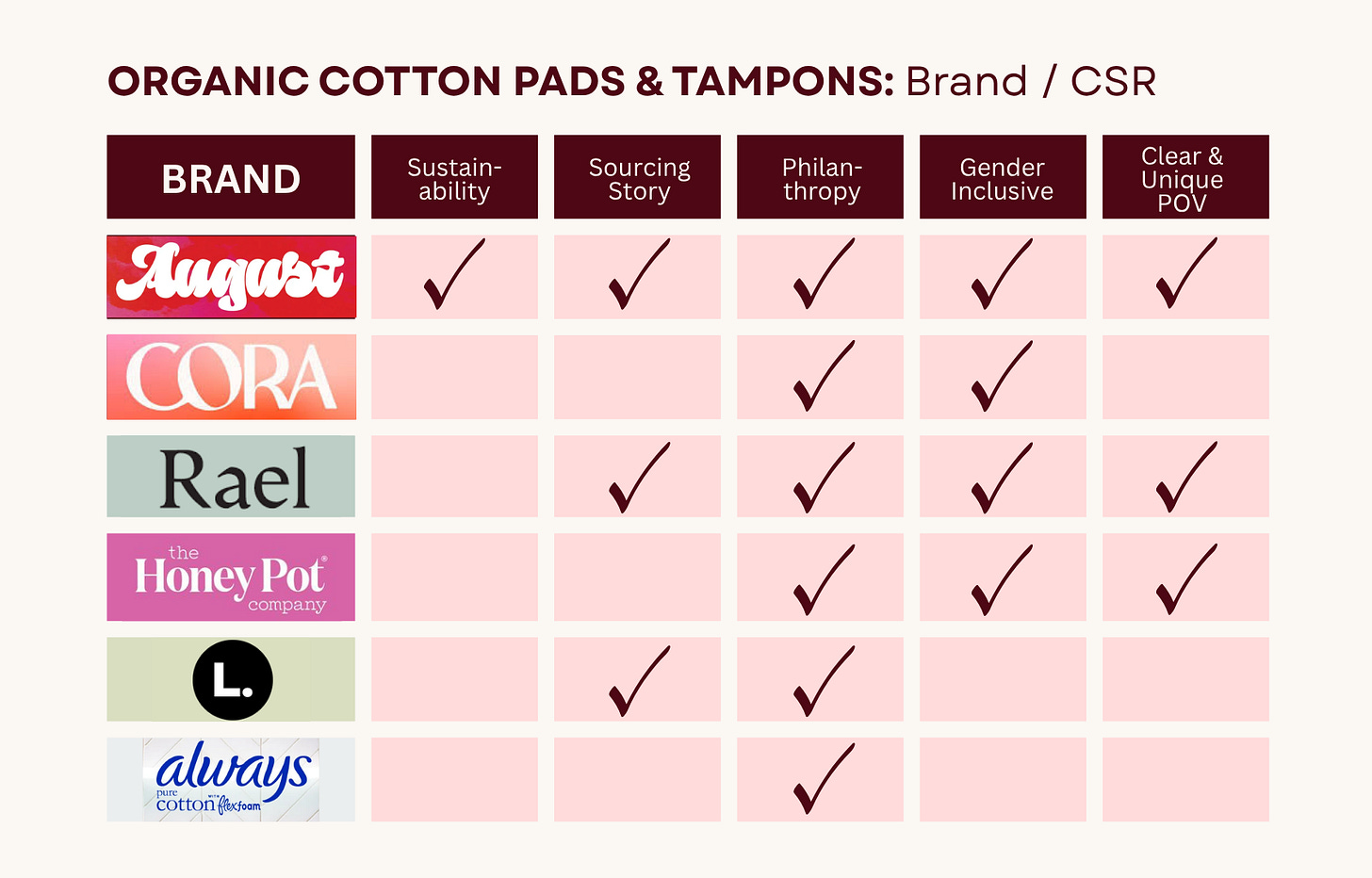
As I was getting to know each brand, I also took note of their positioning / UVP, their tone of voice / point of view, and corporate social responsibility initiatives like sustainability, sourcing stories, and philanthropic partnerships. This is where I started to notice real differences, and what made each brand stand out.
All 6 brands partner with charitable organizations
Most brands indicate that their products are gender inclusive
3 brands talk about where / how their cotton is sourced
3 brands have notably unique points of view
1 brand talks about sustainability
When identifying each brand’s UVP, I was looking for their edge, the thing they wanted to be known for. I was also looking for reasons to believe (RTBs)—perspectives or evidence they had to support their UVP. Each brand used language to further differentiate themselves in these ways too.
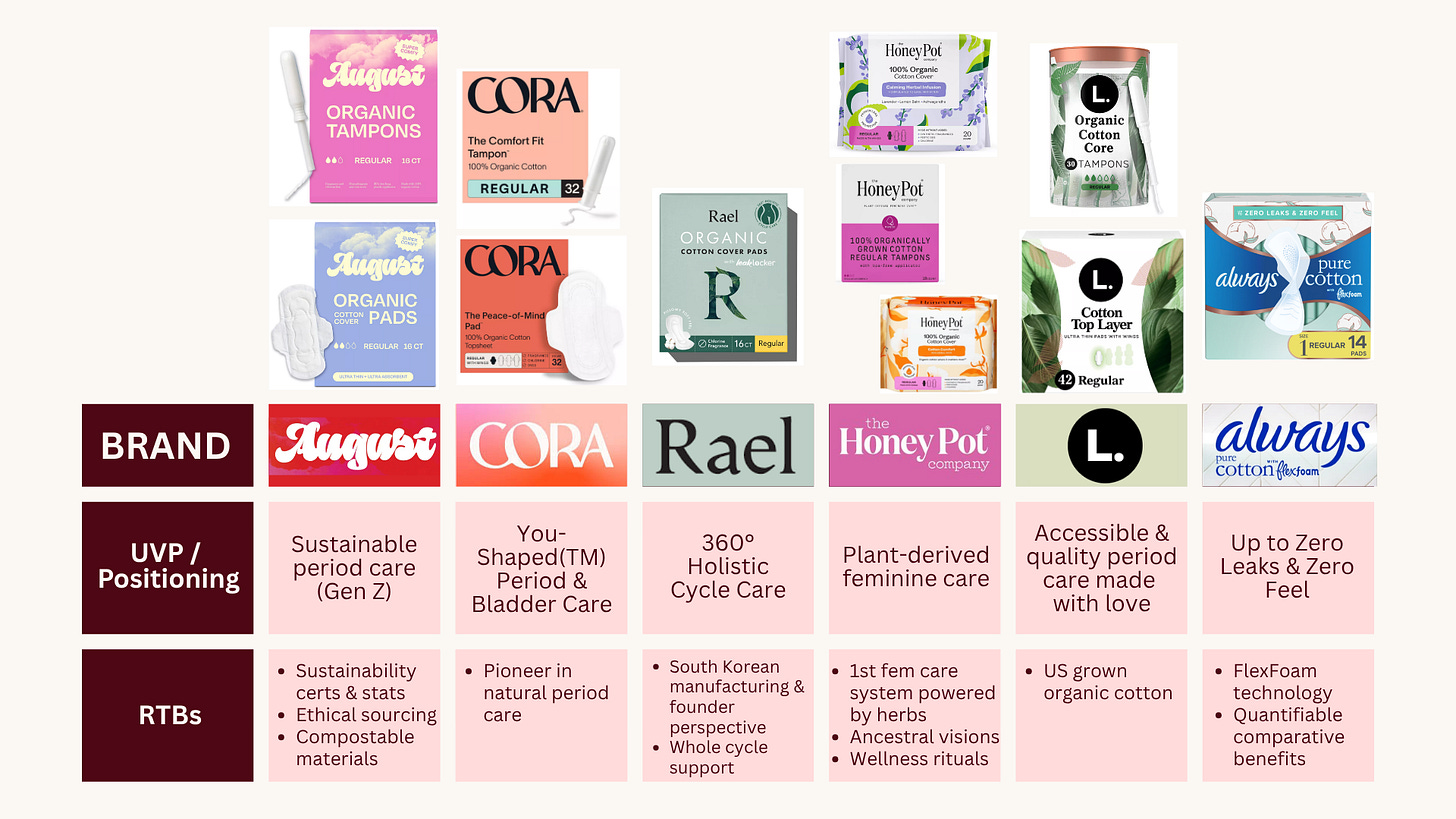
Three brands really stood out with strong UVPs and points of view:
The Honeypot Company
UVP: Plant-derived feminine care
Honeypot brought true innovation to the period care industry with their herbal-infused pads that offer benefits beyond just comfort, leak protection, and absorption. As a brand, they also offer a strong and unique point of view rooted in spirituality and extensive social impact. Their brand offers products that do good for consumers, and they are truly committed to doing good for communities too.
Rael
UVP: 360° Holistic cycle care
Rael was founded by Korean-American women, who noticed differences between the period care spaces in South Korea and the US—specifically, that the natural/organic period care space in the US is much smaller than in Korea. Their brand uses organic cotton from Texas and South Korean manufacturing technology to deliver period products to consumers. Additionally, they connect with consumers who understand that the menstrual phase is just one part of a woman’s monthly cycle, and are building a brand that supports menstruators throughout all four phases of their monthly cycle. Their brand offers products that do good for consumers, during their menstrual phase and beyond.
August
UVP: Sustainable period care
August is the only brand out of all six that mentioned sustainability. In reading through their consumer reviews, their status as a sustainability-focused brand is a major reason why consumers chose August products. August demonstrates their commitment to sustainability with certifications, their ethical cotton sourcing story, their use of compostable materials, and philanthropic support of sustainability-related initiatives. Their brand offers products that do good for consumers, and they are committed to doing good for communities and the planet too.
When all of the products in this space do the job that the consumer needs them to do, brands must go beyond product to differentiate themselves. They’re already making products that do good for consumers by using organic cotton; so how else are they doing good? Do they have a strong social impact? (For the most part, yes.) Have they acknowledged their environmental impact? (One brand has.)
For August: WWLD
What Would Liz (theBrandStrategist) Do? I’d say August has a pretty solid brand and strategy. They have a good sense of Who They Are and take actions aligned with their brand identity.
August: To strengthen your presence across physical and digital shelves, I’d recommend:
Really amplifying your positioning as a sustainable period care brand
Consider using a “most sustainable period care brand” claim
Consider adding sustainability messaging & certifications to a side panel on your packaging, if it’s not there already
Consider bringing a sustainability call-out to front-of-pack—the front panel is prime real estate; given that sustainability is your differentiator and a major reason why consumers choose your brand, it could be a beneficial call-out
Continue taking actions that are aligned with sustainability
Consider working with your supplier to pursue organic and/or ethical sourcing certification for your cotton—GOTS certification would ensure your cotton is grown without harmful chemicals, processed humanely, and meets ethical labor standards; Fairtrade certification ensures farmers and workers are treated fairly and safely. Certifications like these would demonstrate your commitment to organic and ethical practices and could be added to the front panel on your packaging, strengthening your shelf presence
Find statistics on how much ocean plastic is from period care products—partner with an ocean cleanup org to volunteer for a cleanup project, or calculate how many period care products you’re preventing from going in the ocean by being the sustainable period care brand
Continue finding sustainable manufacturing solutions to build sustainability into your products
For Brand Owners & Marketers
This case study really highlighted the importance of investing in brand. Especially if you’re playing in a market where it’s difficult to differentiate your product, your differentiation must come from your brand.
If you’re offering a “better for you” product in a market where you’re at parity with peers, what other ways can your brand be the better option? Are you better for communities, for the planet? Share and act on those commitments to do and be better.
When what your brand does is essentially the same as your peers, how and why you do it is what sets you apart.
The How: What are your values / the principles that guide your work? What is unique about your processes and operations?
The Why: What is your mission? What vision are you working towards? What greater good does your brand exist to serve?
Markets are shifting. As “better for you” markets continue to grow across CPG, the brands that show up in these spaces will need to have a clear sense of Who They Are—not only what products they sell, but also how they do what they do, why they do what they do—and take actions that align with that identity (i.e. prove it; i.e. have integrity).
This is the kind of strategy that will set your brand apart—ensuring you connect with The Right People (consumers, employees, partners). Not all people, but The Right People for you.

